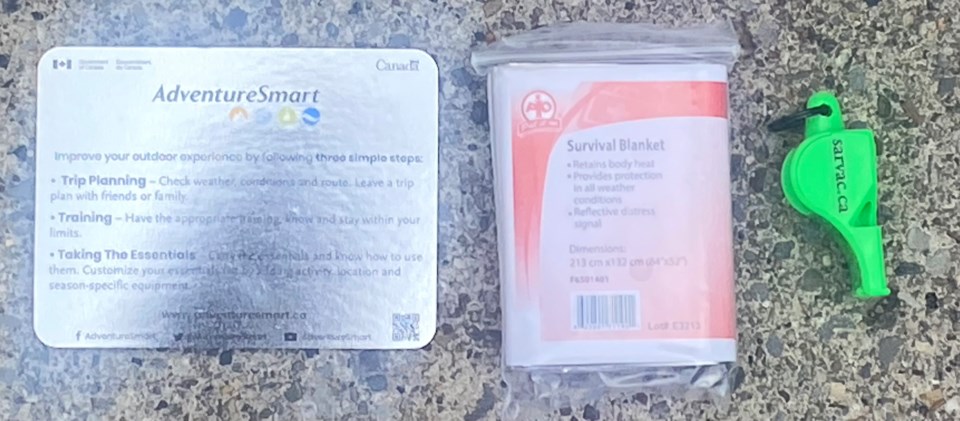When you're out in the thick brush of Kananaskis or among the cascading mountains of Banff National Park this season, a basic whistle and blanket can go a long way toward ensuring your survival.
According to Cayse Ruiter, Preventative Search and Rescue team lead with Cochrane Search and Rescue (CSAR), these two simple tools are essential if you become lost in the woods.
“You want to be able to respond to searchers if they’re in the vicinity, and a whistle allows you to be heard because all of our search and rescue members carry one,” he explained. “Humans have a regular body temperature of 37 C, and a Mylar blanket helps retain that warmth in many different situations.”
As conventional wisdom goes, preparation is key. And when it comes to safety while hiking or camping in the backcountry, that message couldn’t be more true. But preparation isn’t just about bringing the right tools or wearing the right gear, it’s also about having the right mindset and a system in place in case of emergencies.
“The first thing is: tell someone where you’re going before you even leave,” said Ruiter. “Just tell someone, because if no one knows where you are, that’s an issue.”
Other key principles Ruiter noted for basic survival include keeping yourself dry, warm and sheltered from the elements. Most importantly, do not panic and stay in one place.
“Stop moving,” Ruiter emphasized. “If you're lost and you don't know where you're going, you’re likely getting more lost. If you really don’t know where you are, take the ego out of it. The smart move is to stop moving as it makes it easier for us to find you.”
Wearing bright, vibrant clothing also helps increase visibility. Tools such as flashlights, reflective cards or mirrors can help attract attention.
“There was a 12-year-old Scout a couple of weeks ago who was able to get the attention of a helicopter using a belt buckle,” Ruiter noted. “Reflective cards are something we give to kids. They can reflect sunlight to help rescuers spot you, especially from the air.”
Creating visible markers in open areas can also aid search efforts from above.
“Use dead trees or limbs to make a big ‘X’ or a straight arrow,” he said. “The bigger the better. These signs can be seen by helicopters, and even drones.”
Ruiter has been teaching these basic survival concepts to groups ranging from toddlers to adults as part of his work with CSAR.
“They apply to everyone,” he said. “Whether you’re young or old, experienced or new to the outdoors, these are practical steps you can use. The more experience and equipment you have, the better, but even simple tools and knowledge can make a big difference.”
Cochrane Search and Rescue is a local not-for-profit organization dedicated to enhancing search and rescue capabilities in the region. The group relies on volunteers, donations and community support.
For more information, visit cochranesearchandrescue.org.




